Beyond S400 – Project Kusha is India’s bid for an indigenous Long Range Air Defence System
Project Kusha or ‘PG-LRSAM’ (Programme Long Range Surface-to-Air Missile) is an endeavour undertaken by the Defence Research and Development Organisation (DRDO) to succeed the S-400 Triumf LRADS of the Indian Air Force. The delivery of the S-400 Triumf to the IAF has been delayed due to the ongoing Russia-Ukraine war, where Russia has sought amendments to the contracted delivery schedule. Three of the five S-400 squadrons of the five contracted have already been delivered to the IAF so far, with the delivery of the next two only possible starting in 2026.
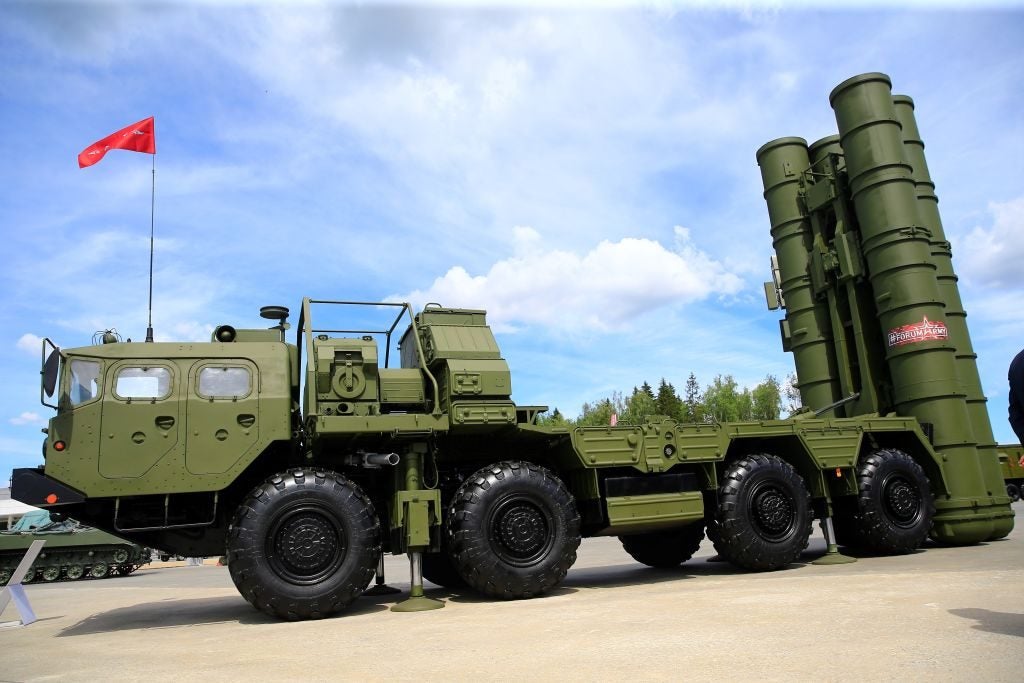
The project received formal clearance from the Cabinet Committee on Security in May 2022, although the groundwork for it had been laid before that. The Ministry of Defence has approved the procurement of up to 8 squadrons of Kusha worth around ₹40,000 crore ($4.7 billion). The system is being developed for use by the Indian Air Force and the Indian Navy.
The lead agency for the development of Programme LRSAM is the Defence Research and Development Laboratory (DRDL), one of many labs under DRDO working on the project, it is responsible for developing the interceptors for the system, while Research Centre Imarat (RCI) is responsible for developing the seeker for those interceptors.
Interceptors
The Long Range Air Defence System consists of three interceptors, namely, M1, M2, and M3, with a range varying from 150 to 350km. The M1 originally featured just one stage but the idea was discarded as the kill vehicle alone would not be able to reach a range of 150km. Each LRSAM variant now features two sections, a kill vehicle and a booster.
The Kill Vehicle
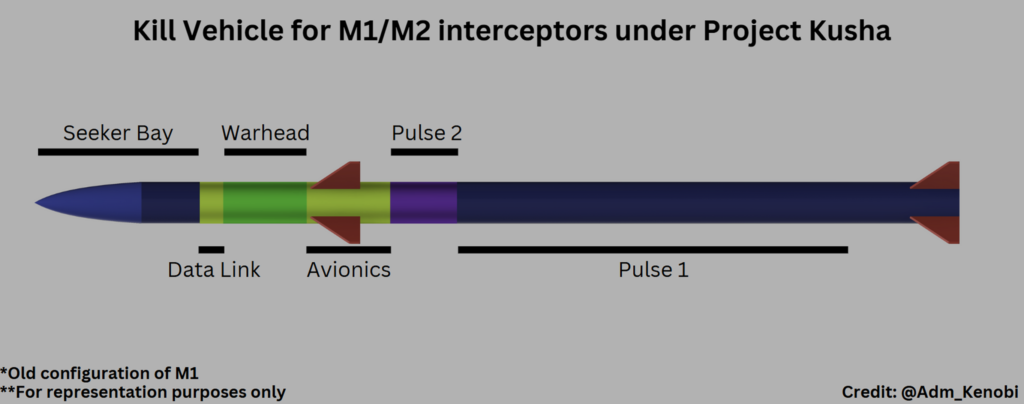
The Kill Vehicle features a dual-pulse solid rocket motor and is common to the M1 and M2 interceptors that act as a second stage after the booster is separated. The kill vehicle features a similar propellant mixture as the in-service Barak-8 MRSAM and under-development Astra Mk-II, with a density of around 1,670kg/m³. DRDL was also responsible for developing the dual pulse rocket motor for the Barak-8 joint venture between India and Israel.
The KV has a diameter of 250mm, similar to Akash-NG and 25mm more than Barak-8’s diameter of 225mm. The first pulse ‘P1’ has an overall grain length of over 2,100mm, while the second pulse ‘P2’ has an overall grain length of over 300mm. The combined length of the P1 and P2 motor with the pulse separation system is over 2,600mm, compared to less than 1,500mm in Barak-8 MRSAM. The mass of grain in the KV is over 150kg, which is around twice as much as Barak-8. The KV will have a length of over 5 meters to accommodate the longer motor and larger warhead.
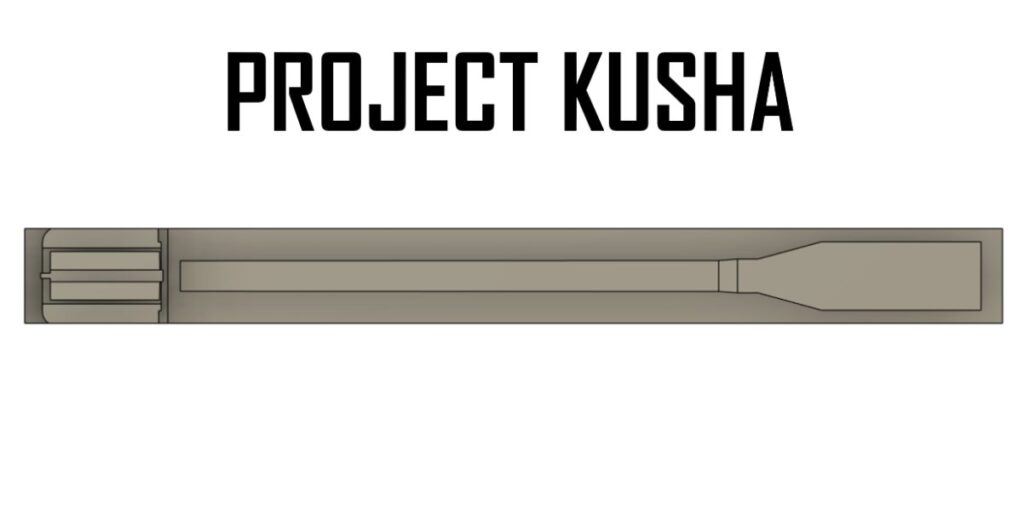
The KV will have an active radar seeker with a Seeker Stabilization and Tracking System (SSTS), similar to the Akash NG developed by DRDO. The SSTS consists of gimbals, their associated mechanical assembly, and the electronic hardware required for controlling the gimbals. It is possible that the KV could use the same gimballed active seeker as Akash-NG or a follow-up development for the same. The seeker can track targets with a velocity of 2,300m/s and a radar cross section of 2m2 at over 20km.
The blast fragmentation warhead for the KV includes approximately 2,500 fragments in 425mm long casing with 250mm diameter. It will also feature a Thrust Vector Control (TVC) at the end of the motor that is exposed after the KV is separated from the booster. TVC has become common on missiles developed by India and is present on almost all surface-to-air missiles being developed by India.
The kill vehicle was meant to be the 150km surface-to-air missile ‘M1’ in the programme, but a study conducted by DRDO concluded that the KV alone would not have enough energy to intercept manoeuvring targets at 150km. DRDO decided that an additional booster was to be added to the KV that would help it intercept targets at over 150km.
Boosters
All three interceptors have boosters with different lengths and diameters, currently, M1 is the only interceptor whose booster configuration has been frozen. The booster for M1 has an overall length of over 1,150mm with a grain mass of around 135kg. The booster has a similar motor exhaust design to the motor of P1 but a different propellant composition with a higher density than P1 and P2. DRDL will also test the new ‘Indhan-1’ propellant composition with a higher pressure index in the coming months. The booster also features control surfaces and TVC at the end for better post-launch manoeuvres.
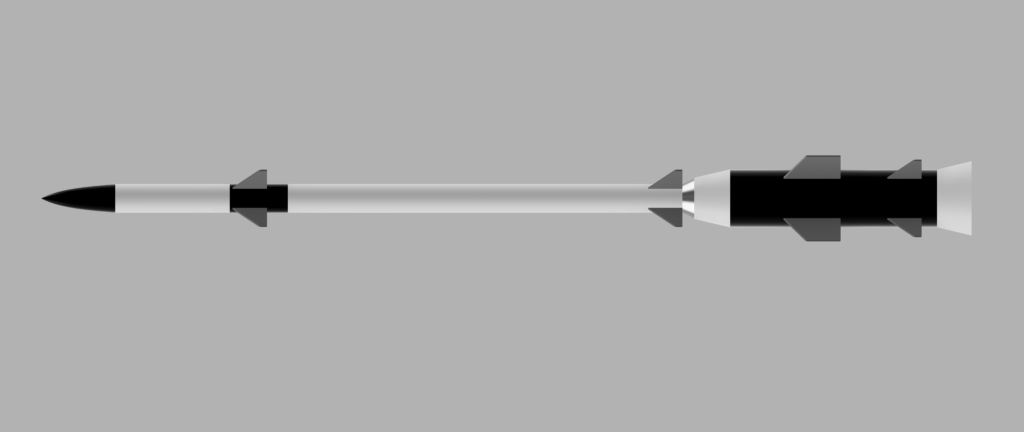
The configuration of the boosters for M2 and M3 has not been frozen yet and is subject to change with more tests and studies conducted by DRDO. There is also a possibility of M3 using a different kill vehicle compared to M1 and M2, with a 450mm diameter.
The Indian Navy, currently, only plans to use the M1 and M2 interceptors of Project Kusha in its next-generation surface combatants. Indian officers gave a presentation at the Air & Missile Defence Seminar 2024 on the future roadmap for the air defence systems in the Indian armed forces, where, a missile under programme LRSAM is defined with characteristics like a range of ‘>250km’ and interception of ‘ASBM’ – Anti-Ship Ballistic Missile flying at 7 Mach. The M2 will be able to defend the fleet against short-range ASBMs of range up to 1,000km, with AD-1 being deployed for ASBMs of a range of 1,500-3,000km. The Indian Navy will use helicopters equipped with Aerial Early Warning radars to detect sea-skimming missiles at long ranges and neutralise them using LRSAM, enhancing the survivability of the fleet. It is also developing a new set of radar for the Next Generation Destroyer spanning 6 meters in length and width, this is four times the size of the current radar used in the latest Visakhapatnam class destroyer.
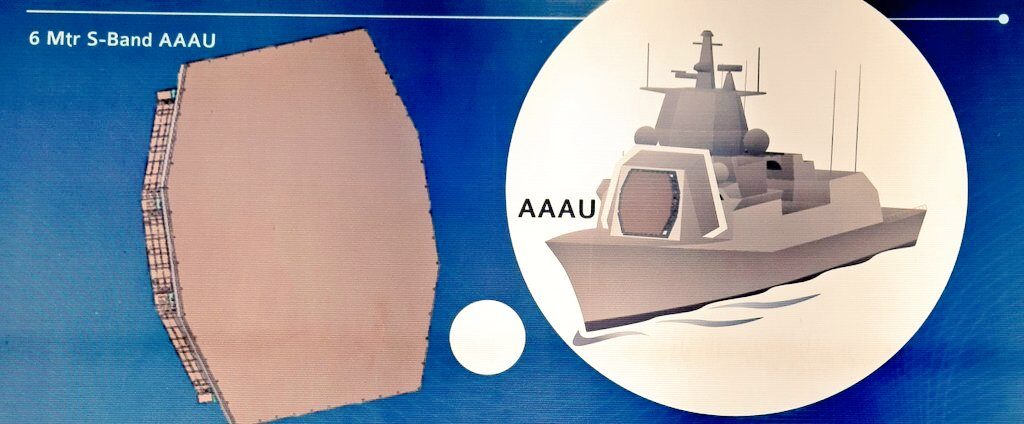
The Indian Airforce will also get a new set of radars for its Kusha regiments. One of the LRSAM radars for the IAF is dubbed ‘LRBMR’ – Long Range Battle Management Radar, an S-band radar with a detection range of over 500km. With its open architecture, Kusha will act as a plug-and-play system with the current air defence systems such as Akash, MRSAM, and the S-400.
The project will help India to be self-reliant in the air defence segment as it will bridge the gap between short-medium range surface-to-air missiles, like Akash and MRSAM, and ballistic missile defence/anti-satellite missiles like PAD and AD series. This will also help it reduce dependence on Russia as the only supplier for its need for long-range surface-to-air missiles.

